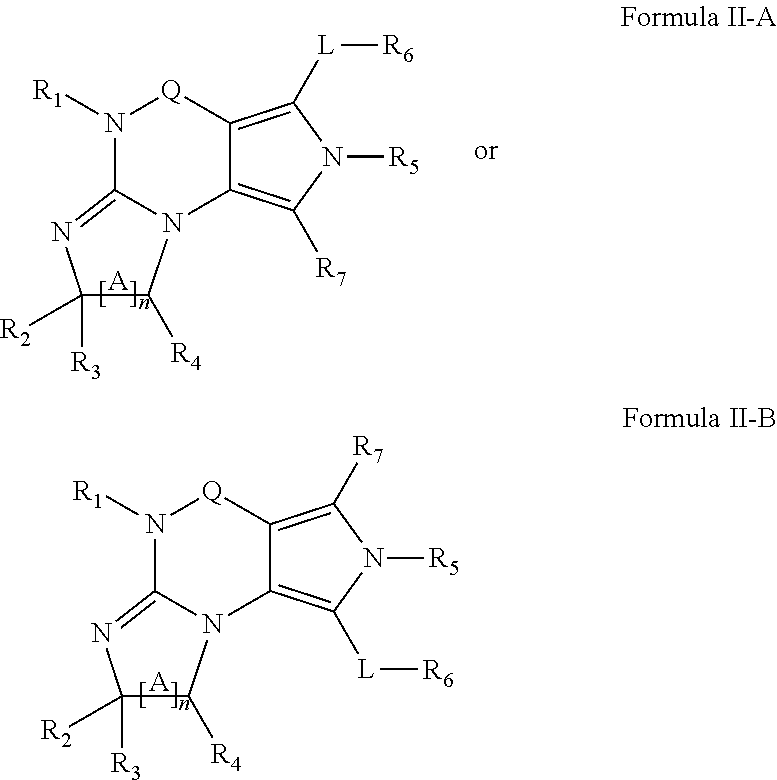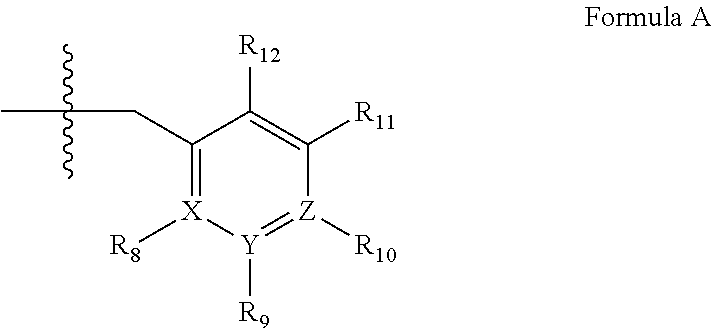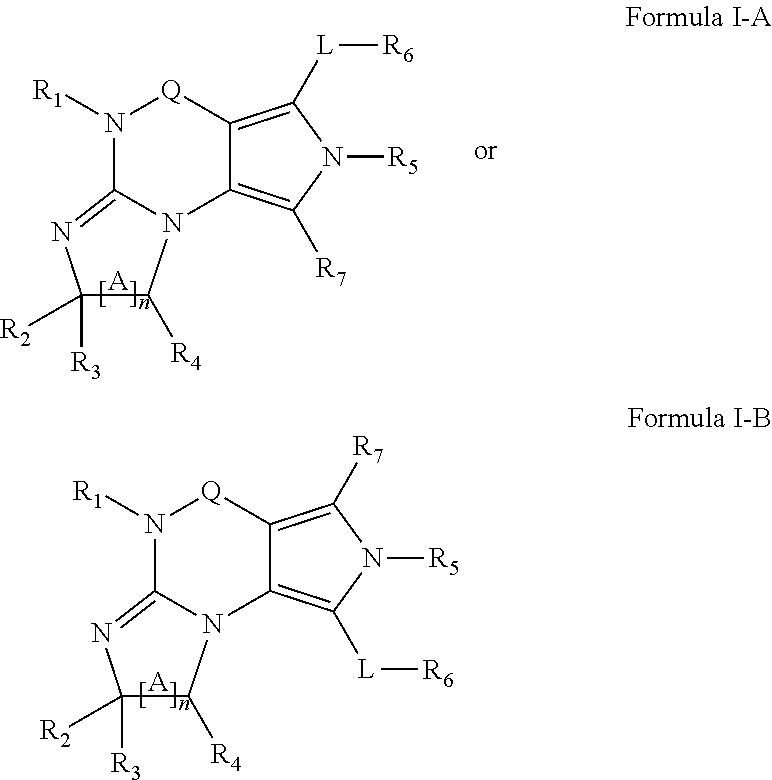Phosphodiesterase-1 inhibitors and their use in treatment of cardiovascular diseases
a technology of phosphodiesterase and inhibitors, which is applied in the direction of cardiovascular disorders, drug compositions, muscular disorders, etc., can solve the problems of potentiated cardiomyocyte hypertrophy, and achieve the effects of enhancing cgmp, and reducing the risk of cardiovascular diseas
- Summary
- Abstract
- Description
- Claims
- Application Information
AI Technical Summary
Benefits of technology
Problems solved by technology
Method used
Image
Examples
example 1
Measurement of PDEIB Inhibition In Vitro Using IMAP Phosphodiesterase Assay Kit
[0560]Phosphodiesterase IB (PDEIB) is a calcium / calmodulin dependent phosphodiesterase enzyme that converts cyclic guanosine monophosphate (cGMP) to 5′-guanosine monophosphate (5′-GMP). PDEIB can also convert a modified cGMP substrate, such as the fluorescent molecule cGMP-fluorescein, to the corresponding GMP-fluorescein. The generation of GMP-fluorescein from cGMP-fluorescein can be quantitated, using, for example, the IMAP (Molecular Devices, Sunnyvale, Calif.) immobilized-metal affinity particle reagent.
[0561]Briefly, the IMAP reagent binds with high affinity to the free 5′-phosphate that is found in GMP-fluorescein and not in cGMP-fluorescein. The resulting GMP-fluorescein-IMAP complex is large relative to cGMP-fluorescein. Small fluorophores that are bound up in a large, slowly tumbling, complex can be distinguished from unbound fluorophores, because the photons emitted as they fluoresce retain the ...
example 2
Inhibition of Cardiac Hypertrophy
[0567]A selective PDE1 inhibitor of the present invention is tested in a mouse model where the mice are treated with isoproterenol. Such a model can be useful for extrapolating to diseases or disorders involving an enlargement of the heart or cardiac tissue, e.g., congestive heart disease.
[0568]Isoproterenol treatment in mice increases cardiac size in mice untreated with a selective PDE1 inhibitor of the present invention. Size is indicated by heart weight (g) / tibia length (mm). At 3 mg / kg, administration of the selective PDE1 inhibitor of the present invention significantly decreases cardiac hypertrophy in mice which are treated with isoproterenol. A selective PDE1 inhibitor of the present Invention also significantly prevent cardiac hypertrophy at administration of 10 mg / kg.
example 3
Cellular Screening Systems
Primary Human Cardiomyocytes
[0569]Primary human cardiomyocytes have a unique signaling system involving a synergy of calcium and cAMP to achieve proper force of contraction. cGMP is an important moderator of cell function that prevents hypertrophic responses that are the mark of Heart Disease, and PDE1C is abundant in these cells.
[0570]A selective PDE1 inhibitor of the present invention elevates cGMP in Human Cardiomyocytes in Culture. When measured in conjunction with Sildenafil, the selective PDE1 inhibitor is about 100-fold more potent than Sildenafil in enhancing cGMP. Such potency would have various application in various cardiovascular applications.
Primary Human Smooth Muscle Cells
[0571]Primary human smooth muscle cells contain PDE1C as well as PDE3, 4 and. Consequently, primary human smooth muscle cell may be important mediators of the pathology in Heart Disease.
[0572]Atrial natriuretic peptide (ANP) is a peptide which binds the natriuretic peptide r...
PUM
| Property | Measurement | Unit |
|---|---|---|
| temperature | aaaaa | aaaaa |
| pH | aaaaa | aaaaa |
| pH | aaaaa | aaaaa |
Abstract
Description
Claims
Application Information
 Login to View More
Login to View More - R&D
- Intellectual Property
- Life Sciences
- Materials
- Tech Scout
- Unparalleled Data Quality
- Higher Quality Content
- 60% Fewer Hallucinations
Browse by: Latest US Patents, China's latest patents, Technical Efficacy Thesaurus, Application Domain, Technology Topic, Popular Technical Reports.
© 2025 PatSnap. All rights reserved.Legal|Privacy policy|Modern Slavery Act Transparency Statement|Sitemap|About US| Contact US: help@patsnap.com



